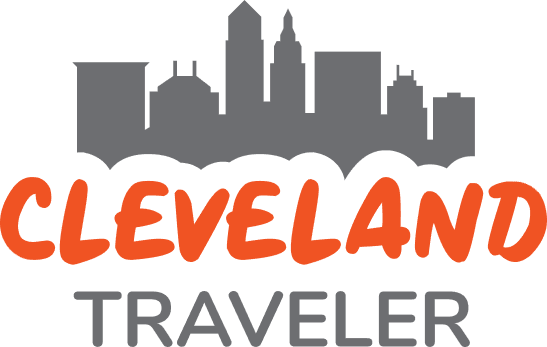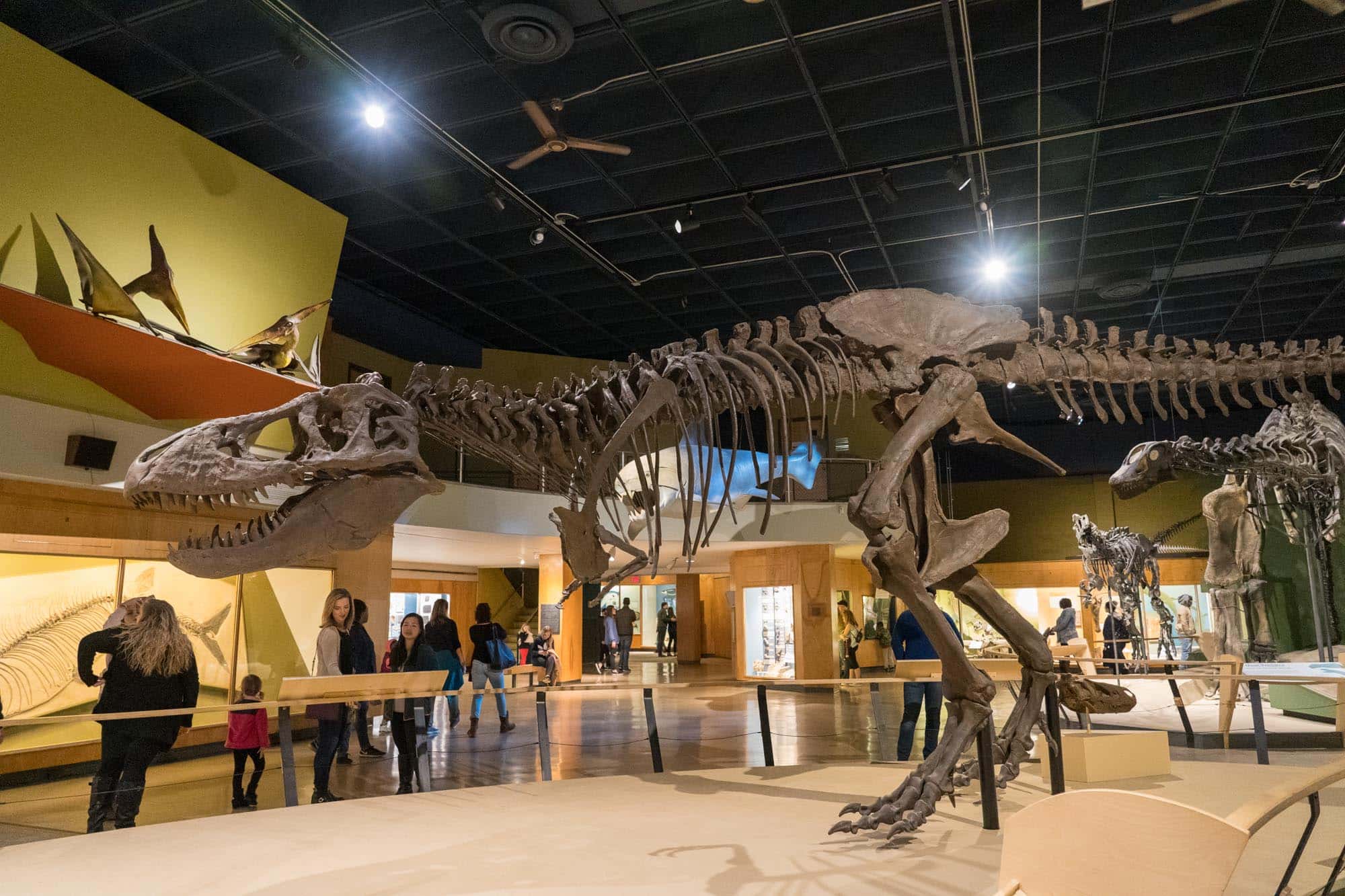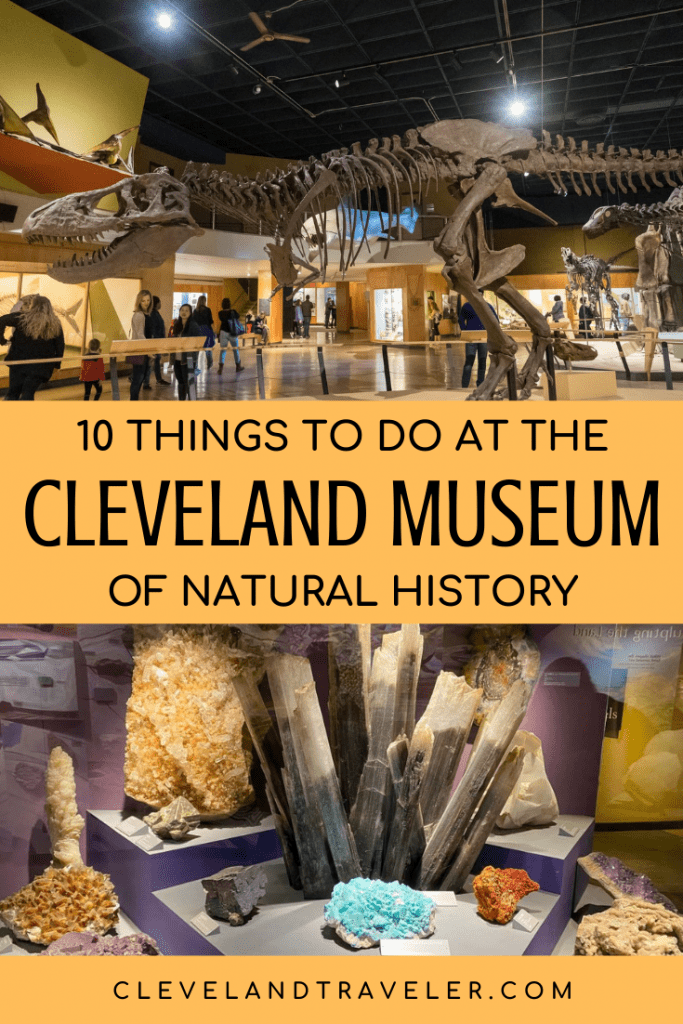NOTE: The Cleveland Museum of Natural History is once again open to the public, but is operating under some new guidelines because of COVID-19. Timed tickets must be reserved online in advance for every visit, and visitors must wear masks. More info here.
A visit to the Cleveland Museum of Natural History (CMNH) is always a treat. This natural history museum is often overlooked amongst the larger museums in Cleveland, but it’s great for both adults and children alike.
Whether you are looking for things to do in Cleveland on a rainy day, or you want to continue exploring Cleveland’s best museums, a stop at the Cleveland Museum of Natural History is a must.
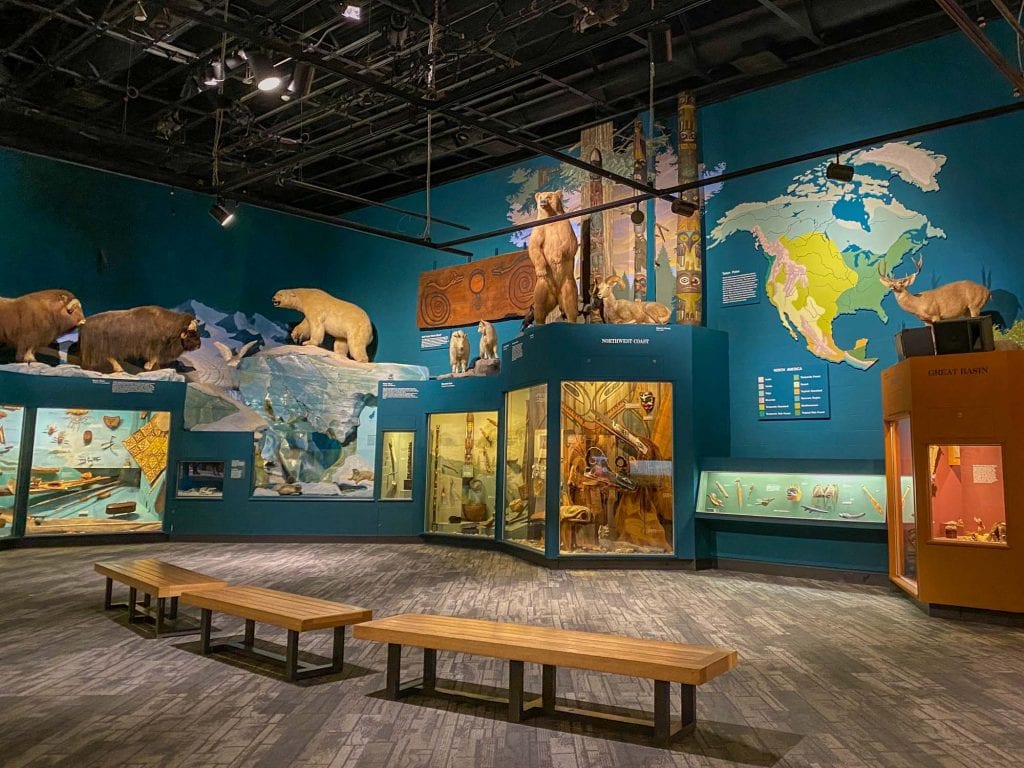
The Cleveland Museum of Natural History was founded in 1920 for education and research in geology, paleontology, biology, and astronomy, among many other fields of science.
Its origins began as a part of ARK. ARK was a place where Cleveland’s scholars gathered and created several cultural and historical institutions in the area. Originally located in the northeast corner of Public Square in a small building, the visitors called it “ARK” for the many taxidermied animals on display. Members of ARK eventually created the Cleveland Academy of Natural Sciences in 1845, which eventually evolved into the Cleveland Museum of Natural History.
While ARK disappeared by the 1900s, Harold T. Clark gathered 26 civic leaders together to create the Cleveland Museum of Natural History. The museum started in an office building downtown, and was quickly moved to Hanna House in 1922. Then, as it began to outgrow the mansion in the 1950s, the Cleveland Museum of Natural History was created on Wade Oval in University Circle, where it still stands today.
Now CMNH is home to exhibits ranging from gems and jewels to live animals of Ohio. There are also incredible temporary exhibits including the current one all about dinosaurs.

To help make your time at the Cleveland Museum of Natural History as memorable as possible, here are some of the top things you’ve got to see. This list includes amazing exhibits and hidden gems to enjoy during your visit to the museum.
After having visited CMNH many times in the planning of my museum wedding here, I’ve gotten to know this museum really well… including things you may not know about as a casual museum visitor!
10 Must-Sees at the Cleveland Museum of Natural History
1. Prehistoric Indians of Ohio
Sears Hall of Human Ecology, Main Level
While pretty much all natural history museums have taxidermied animals and fossils, it is nice to see some local history as well. This is a section of the museum dedicated to showcasing the history and culture of the Indigenous peoples of Ohio, including what they wore, tools they used, and how they were buried.
There are burial mounds, a canoe, many tools, jewelry, and so much more!
2. Balto
Sears Hall of Human Ecology, Main Level
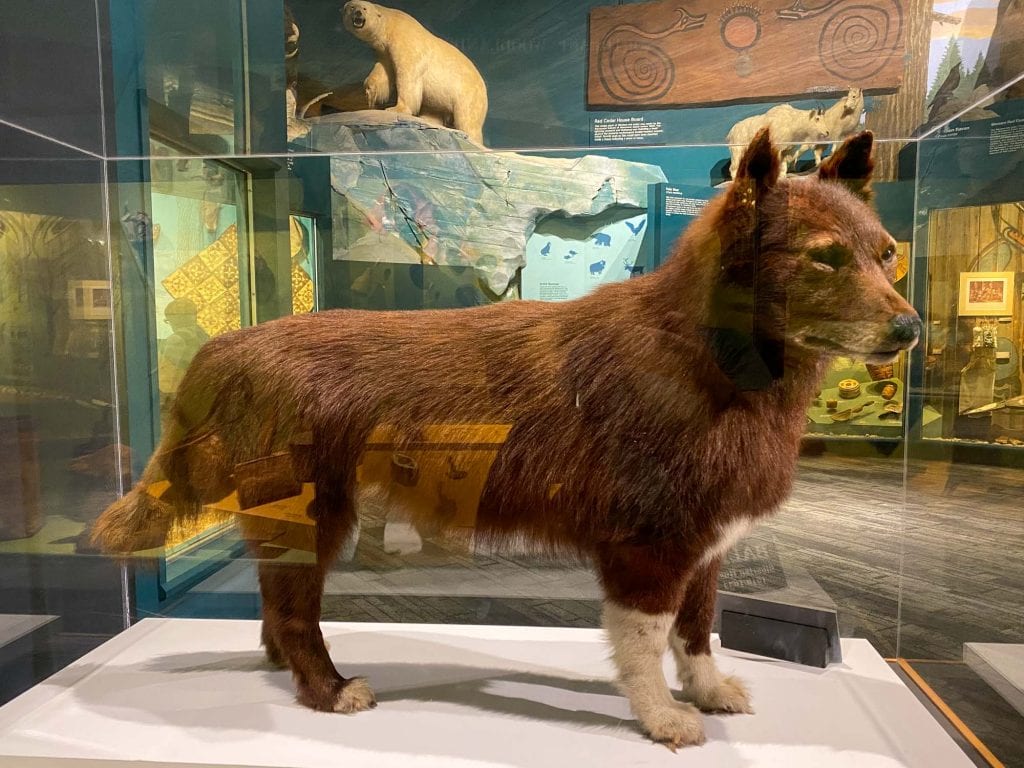
Many remember Balto as the lead dog in a dog sled team that delivered the life saving serum during a diphtheria outbreak to Nome, Alaska in 1925, a place only reachable during the winter via the Iditarod Trail. (Thanks, Disney.)
Balto and his team were successful and quickly became famous across the US. Only now I know what you’re thinking… why is he at the Cleveland Museum of Natural History?
Balto and his team became heroes overnight, but were quickly forgotten. As the sled dogs were neutered and couldn’t make money from breeding, they were sold to perform on the vaudeville circuit until they were purchased for a “dime” museum in Los Angeles.
It was there that Cleveland businessman George Kimball discovered them and saw how mistreated they were. He offered to pay $2,000, which he had to raise in just two weeks to purchase the dogs. The Balto Fund was created and broadcast nationwide, and in just 10 days he was able to purchase the dogs and bring them to Cleveland to live out their days at the Brookside Zoo (today’s Cleveland MetroParks Zoo) in comfort. They received a hero’s welcome and parade upon arrival in Cleveland.
Balto lived to be 14 years old before passing in 1933. He was then preserved and sits proudly on display among many other taxidermied animals at the Cleveland Museum of Natural History.
3. Perkins Wildlife Center & Woods Garden
Outside, entrance is next to the Museum Store
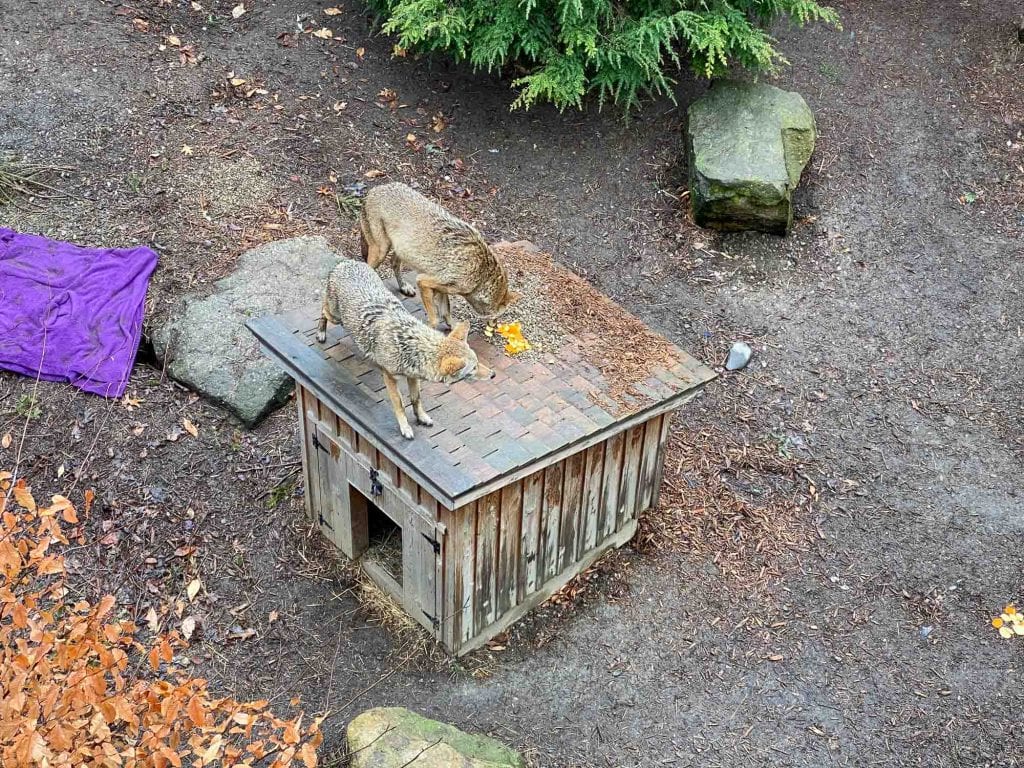
This is one of my favorite exhibits at the museum, mostly because the live animals are adorable. This area is relatively new, first opening in 2016. Perkins Wildlife Center focuses on local Ohio animals including coyotes, foxes, raccoons, bobcats, river otters, and many birds as well as the ecosystems they live in. They’re all rescued animals.
My favorites include Bob and Bitty the bobcats, Meeko the albino racoon, and Red, Tex, Ember, and Charcoal, the coyotes.
4. Lucy
Human Origins Gallery, Main Level
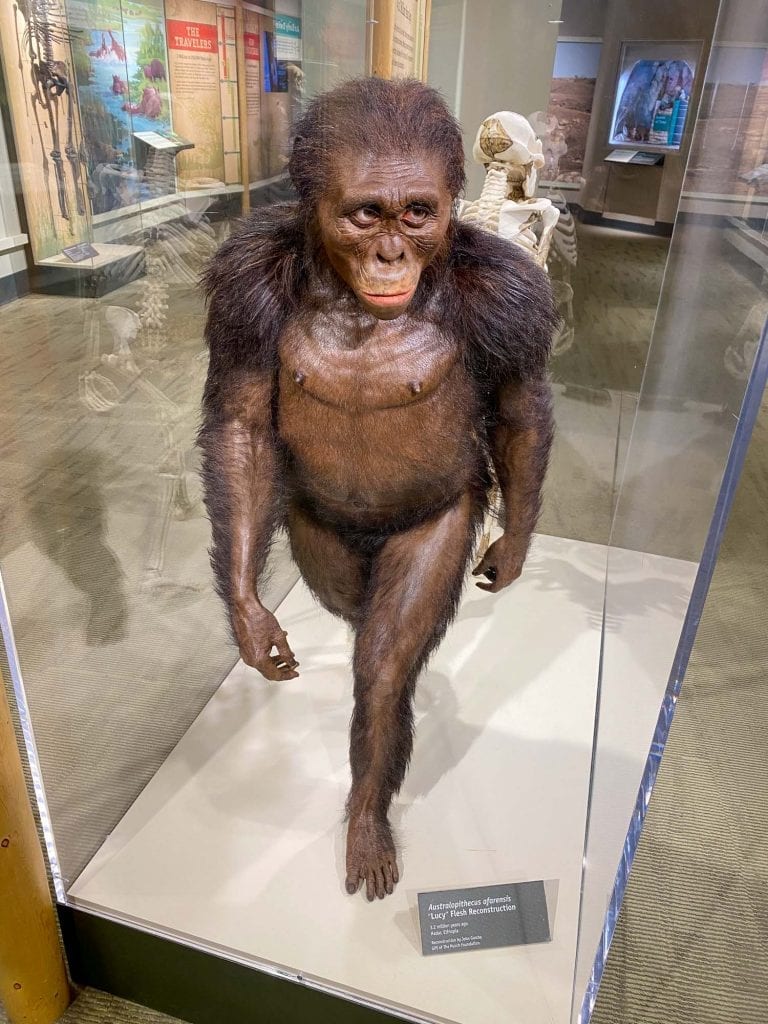
Lucy is the name for the Australopithecus afarensis skeleton that was discovered in Ethiopia in 1974. What makes her so unique to Cleveland is that CMNH’s curator at the time, Dr. Donald Johanson, is the one who led the team that found her!
At the time, finding Lucy was an incredible discovery because she was the most complete and oldest human ancestor skeleton ever found at 3.2 million years old! Her discovery is still groundbreaking in learning about human evolution.
While her actual skeleton isn’t on display at the Cleveland Museum of Natural History (it’s safely in storage at the National Museum of Ethiopia in Addis Ababa, Ethiopia), the museum did create a cast of her skeleton as well as a reconstructed version of what she would have looked like in prehistoric times.
Be sure to enjoy the whole Human Origins Gallery, as it’s full of information and fossils.
5. Kirtland Hall of Prehistoric Life
Main Level

This whole room is a fantastic display of dinosaur skeletons and prehistoric animals. A notable skeleton to see is the Haplocanthosaurus Delfsi, a long-necked sauropod from the late Jurassic period. This was discovered in Red Canyon, Colorado, and almost half of the bones in the skeleton are real fossil material. The museum lovingly calls this skeleton “Happy.”
While exploring the dinosaur fossils, be sure to check out the T-Rex that was discovered in Montana; it’s from around 68-65 million years ago!
Also check out Dunkleosteus Terrelli, a massive fish skeleton with huge teeth that was actually discovered in Ohio during the construction of I-71. Northeast Ohio was once covered with a shallow sea 358 million years ago, which is why many fish and plant fossils were found around here.
Lastly, a favorite of mine is the glyptodon, which essentially looks like a giant armadillo. That makes sense, as it was an early ancestor of the animal. This guy existed between 2.6 million-11,700 years ago, and was found in Buenos Aires Province in Argentina.
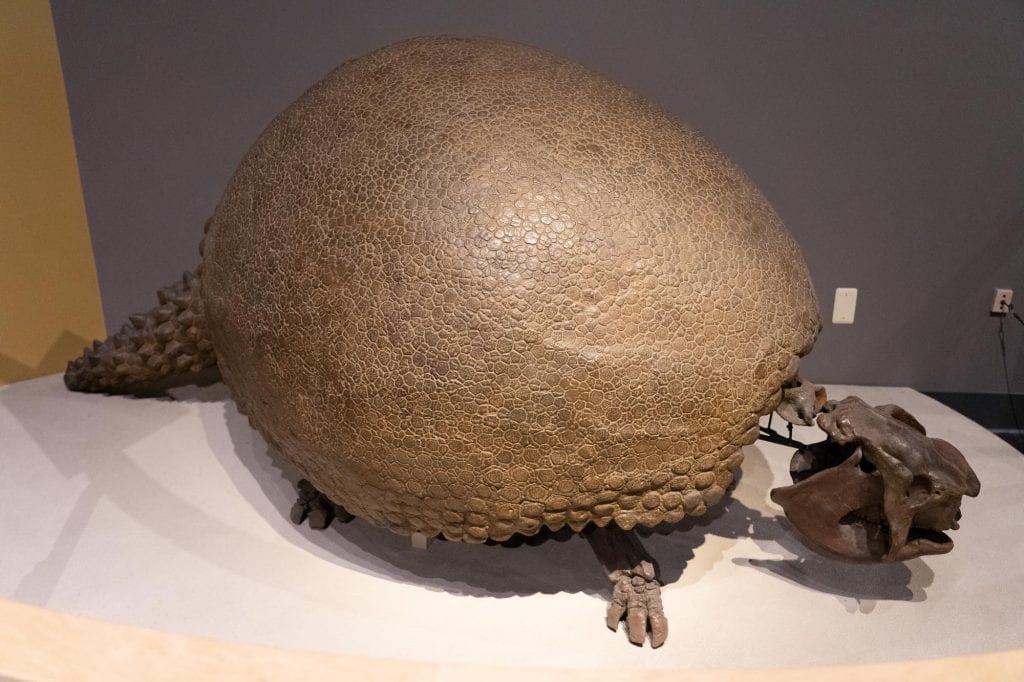
6. Shafran Planetarium & Mueller Observatory
Main Level
Enjoy the planetarium show to see the stars, planets, and constellations over Cleveland live. Shows are $5 for members or $10 for non-members with a museum ticket, and are at 11:30 a.m. and 3:30 p.m. on select days.
To see the stars at night, the Ralph Mueller Observatory is open from 8:30-9 p.m. on clear Wednesday evenings from September through May. Gaze at the stars from a 10.5-inch refracting telescope.
Aside from the planetarium and observatory, there is also an exhibit in front of this area to learn about gravity, how the stars align in certain months, and even a pretty incredible light tunnel you can walk through.
7. Foucault Pendulum
Wade Oval Lobby, Main Level
This 32-foot pendulum with its 270-pound bob swings around all day, demonstrating earth’s rotation on its axis. You can watch the pendulum swing, knocking over dominos and other small figures regularly throughout the day.
8. Earthquake Simulator
Reinberger Hall of Earth, Main Level

This is a fun hands-on activity for the kids and adults alike. This simulator shows you what a 5.0 magnitude earthquake feels like – the same magnitude earthquake that hit northeast Ohio and Pennsylvania in January 1986.
9. Moon Rock From the Apollo 12 Mission
Wade Gallery of Gems & Jewels, Main Level
Located among the diamonds, quartzes, and lovely stones in the Wade Gallery of Gems & Jewels sits a moon rock from the Apollo 12 mission.
Created 3.3 billion years ago by a lava sheet that solidified on the Ocean of Storms on the Moon, this rock was broken up by a meteorite that hit 228 million years ago. On November 20, 1969, Alan Bean picked it up and now it resides at the Cleveland Museum of Natural History.
Aside from the incredible moon rock, check out the various gems and jewelry located in this gallery.

10. Find the Hidden Easter Eggs Around the Museum!
All Over the Museum
Okay, this isn’t exactly an exhibit to see, but the Cleveland Museum of Natural History loves to hide things throughout the museum to find!
First of all, outside the Smead Discovery Center on the lower level of the museum there is a display of beetles on the wall. Amongst them is a tiny little Volkswagen beetle!
Also, there are always at least 6 plastic cheeseburgers hidden throughout the museum at all times. I know there is one inside of the shark’s mouth that hangs in the Kirtland Hall of Prehistoric Life. As for the rest, you’ll have to visit to find them yourself!

There are Easter eggs all over the museum, including in display cases. These are just some of the more popular ones that people have seen! This makes for a fun scavenger hunt with kids, or for those young at heart.
Pro-tip: If you are visiting with kids, be sure to also visit the Smead Discovery Center for interactive activities like the play fossil dig!
Tips For Visiting The Cleveland Museum of Natural History
If you are planning a visit to CMNH, here is what you need to know!
1. Museum Admission and Parking Fees
To visit the Cleveland Museum of Natural History, the admission is $17 for adults aged 19+, $14 for college students with a student ID, youth aged 3-18, and seniors aged 60+. Children 2 and younger are free.
This does not include the fee for the planetarium show if you choose to do that.
Also, there is a parking garage at the entrance, but it is $10 for 2.5 hours to park there plus $1 per each half hour over that, with a daily maximum of $16. You can also use the metered parking in Wade Oval.
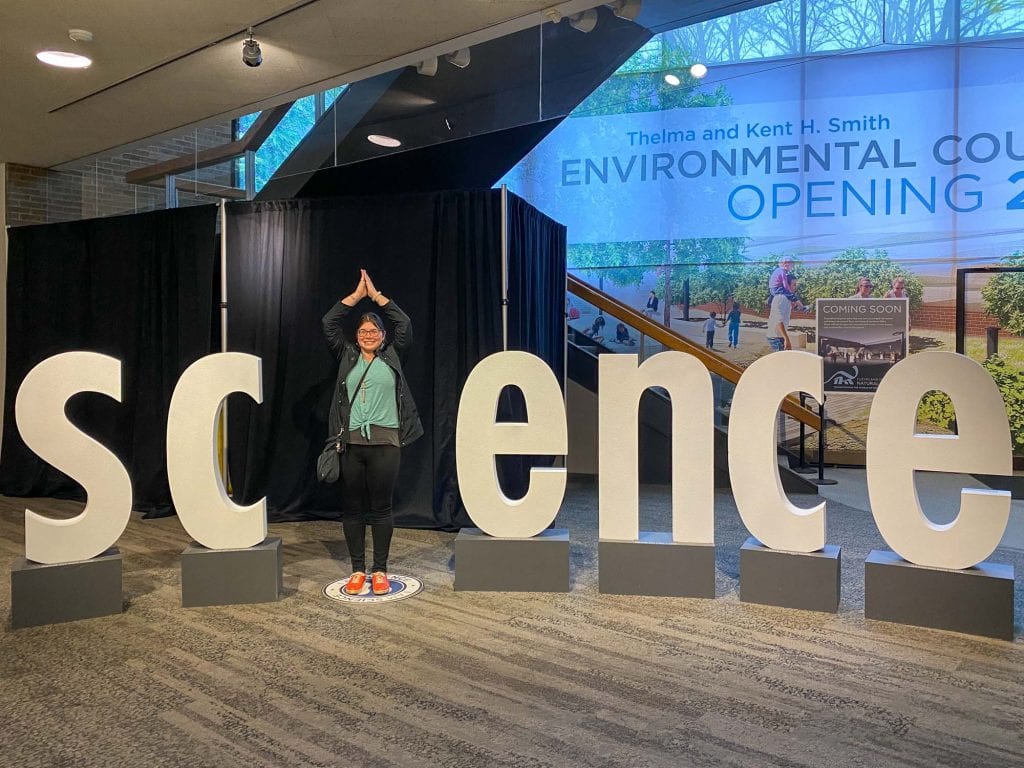
2. Don’t forget to pick up a museum map
While this is a pretty small natural history museum, a map will help you navigate the museum and prioritize your time. There is a main level, lower level, and outside area where the wildlife center is located.
If you have questions, there are information desks located both in the Kirtland Hall of Prehistoric Life next to where you enter the museum from the parking garage, and at the Wade Oval Entrance.
3. Hungry? Check out the incredible Exploration Cafe!
The Cleveland Museum of Natural History is actually a Zack Bruell restaurant, owned by the famous Cleveland chef and restaurateur who owns many great establishments like Parallax, Alley Cat Oyster Bar, L’Albatros, and more.
As such, this place has a lot of good food options like veggie spring rolls with sweet chili sauce, roast beef on pita, and more delightful wraps, sandwiches, and sodas.
Hours are 10 a.m.- 5 p.m. Wednesday through Sunday.
4. Plan your visit in advance
The Cleveland Museum of Natural History isn’t a huge museum like the Cleveland Museum of Art is. However, you’ll still want to plan out your visit a little before you go.
The Cleveland Museum of Natural History is open from 10 a.m. to 5 p.m. Wednesday through Sunday.
- If you have 1 hour: Select several exhibits from the main highlights from the list above.
- If you have 2 hours: You can likely see almost everything but a little more rushed. You could also see everything on the ground floor and the Perkins Wildlife Center easily in 2 hours.
- If you have 3+ hours: You’ll easily be able to enjoy what every exhibit has to offer in 3+ hours, including the Smead Discovery Center, Perkins Wildlife Center, all the permanent and the temporary exhibits, and find those Easter eggs!
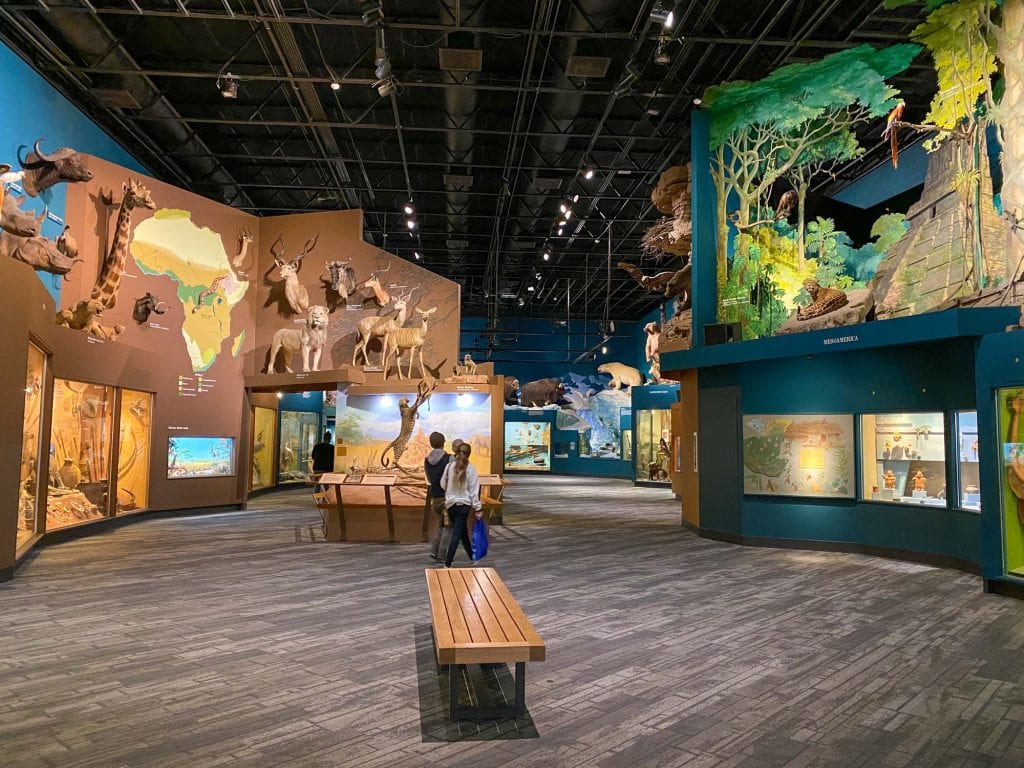
5. Can’t get to the Museum? Check out CMNH@Home & CMNH@Night
Every Monday, Wednesday, and Saturday at noon, CMNH hosts CMNH@Home programs online where you can learn about science and the museum. Programs include Museum Mondays, Wildlife Wednesdays, and Scientist Saturdays. This is perfect for kids interested in science.
For the adults, CMNH hosts CMNH@Night, including Turntable Tuesdays, where you can jam out and enjoy science-themed Spotify playlists, or Field Note Fridays, where you can watch videos from incredible scientists.
6. Check out cool events
There always seems to be something happening at the Cleveland Museum of Natural History! One of my favorite things to enjoy is their Think & Drink with the Extinct events. What is known as “Cleveland’s brainiest happy hour,” it happens from August through April on the third Thursday of the month from 6-10 p.m.
The event includes local beer, wine, and liquors as well as lots of interactive and fun exhibits all matching a theme for that month. Enjoy these fun events for $12 a ticket.

7. Weddings at the Cleveland Museum of Natural History
Did you know you can get married here?! It’s actually where my husband, Chris, and I got married in 2018! We had the ceremony in the Wade Oval Lobby, had happy hour with Balto, and partied under the dinos all night! It was incredible and such a fun idea!
Guests have access to all of the Main Level exhibits except for the Live Animals, the Shafran Planetarium and Mueller Observatory, and Wade Gallery of Gems & Jewels.
Our guests enjoyed the exhibits, took a ride on the earthquake simulator, and loved partying among the prehistoric animals. It was such a good time, and I highly recommend it! You can check out their page here for more details!
With all of these tips, you’ll definitely have a great visit to the Cleveland Museum of Natural History!
READ NEXT: Visiting the Cleveland Museum of Art: 9 Things You Have to See
Have you visited the Cleveland Museum of Natural History? What is your favorite thing to see there?
Pin it for later:

Kat is a Cleveland transplant and has lived here for over 5 years. She loves to eat, drink, and explore all across the city, and has made it her personal mission to find the best breweries and pizza in Northeast Ohio. She also runs a couples travel blog and podcast called World Wide Honeymoon.
